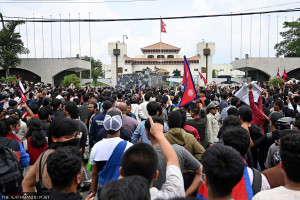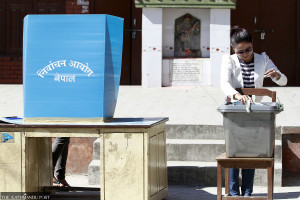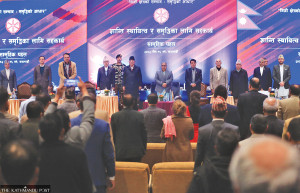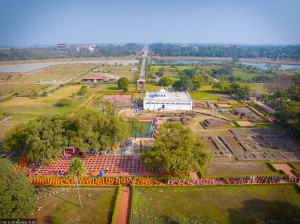Opinion
Forgotten regime
Historical accounts of the Dolpo region largely have omitted discussion of the ancient Zhangzhung kingdom and focussed primarily on Tibet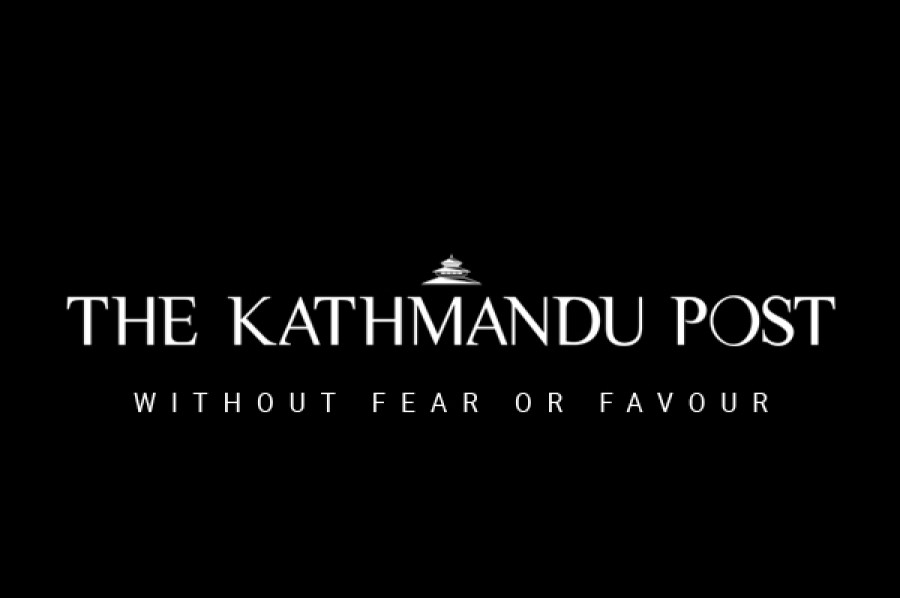
Tashi Tewa Dolpo
The Zhangzhung regime
The etymology of ‘Dolpo’ is still unknown, though the word is found in several religious teachings of the Buddha. According to Sey Namkha Dorjee, chairperson of the Dolpo Concern Centre, the word was uttered by the Buddha in 6th century BC while predicting the birth of the great 13th century scholar, Dolpopa Sherab Gyaltsen. The term ‘Dolpo’ is also mentioned in the medical text Four Medical Tantras where ‘local physicians’ are believed to have taught phlebotomy (ie, bleeding as medical treatment) in Dolpo. Furthermore, Dorjee states that the word was further emphasised when Vajrayana Buddhism spread in the mountainous region around 700 AD. But between 6th century BC and 700 AD, there is no mention of the word.
There are several foreign scholars who frequently discuss Tibet and its linkage to Dolpo, even if they are discussing or writing a book on Dolpo. Generally, their main assertion is that the people of Dolpo migrated from Tibet and their culture is similar to Tibetan culture. This becomes highly problematic as the Dolpo people never migrated from Tibet. Before Tibet, Dolpo (the territory and the people) was a part of the Zhangzhung regime, which has a rich history but was sadly eradicated after its annexation by the Tibetan emperor around the 8th century. In discussing Zhangzhung and Dolpo, historian Nyima Woser Choekhortshang argues, “Zhangzhung was very different from Tibet. Zhangzhung became part of Tibet only in the 8th century when King Ligmikya of Zhangzhung was killed during the reign of Trisong Detsen. Zhangzhung was more powerful than Tibet and had its own language, which was different than Tibetan. In addition, the area covered by Zhangzhung goes as far as Ladakh and Baltistan. Dolpo still has many Zhangzhung cultural aspects and words in their dialect. The written language is found in the Tunhuang caves in China which date back tomore than 1000 years old. Other evidence that Dolpo was part of Zhangzhung is demonstrated in the most famous fort of Zhangzhung in Lower Mustang. It is called Serib Drugmo Zong (Dragon Fort of Thakali).” Therefore, the evidence strongly indicates that the Dolpo people never migrated from Tibet.
There are also other scholars like Tsuguhito Takeuchi and Ai Nishida, who clearly believe that the powerful kingdom, Zhangzhung, was conquered by the Tibetan Empire, which assimilated both the people and language of Zhangzhung, as between the 15th and the 18th century, before Dolpo was annexed to the current territory of Nepal, Dolpo also had a king, Ranag; therefore, there is little trace of the Zhangzhung language and culture today.
Distinctly different
There are several arguments over Dolpo history. There are also youths within this community who feel that they are Tibetan and culturally close to Tibet. This is not surprising, as they are taught in schools affiliated to the Tibetan Administration in Dharamshala. They are not able to learn about their own community’s unique history. There are even stories of Dolpo students being bullied in these schools. Dolpo consists of seven VDCs and is still a remote community where the literacy rate is negligible and the poverty rate is high. How can you really expect them to know about their own history when some institutions try to liberate them in the name of ‘quality’ education? Will they ever get a chance to read about what the Tibetan empire did to Zhangzhung and how the Tibetan empire never promoted the language of Zhangzhung? Will they ever get a chance to read that Dolpo was a part of Zhangzhung before it was annexed by Tibet?
There are cultures within Dolpo which cannot be generalised as Tibetan, according to Norbhu Ghale, chairperson of the Dolpo Indigenous Development Centre. Bonpo is a religious tradition which still has a stronghold in Dolpo. This tradition worships nature, including rivers and mountains. There are several mountains that are worshipped before any pujas are performed in Dolpo.
Damage done
In the case of Nepal, as argued recently by Yug Pathak in ‘Ke Nepal thulo cha?’, an article published in Kantipur, a group of writers such as Surya Bikram Gyawali, Dharanidhar Koirala, and Parasmani Pradhan submitted a history suitable to the king and also assisted in the educational policy of Mahendra’s Panchayat. In addition, the sanskritisation process was legitimised to create an ‘Asali Hindustan’. Meanwhile, some influential foreign scholars also visited the mountainous regions and published a book about the local peoples. They looked into the history of Dolpo starting from the Tibetan rule, not from the Zhangzhung civilisation.
One should not forget the cultural revolution of China during 1950-70s, which also invaded Tibet. Since then, the West, mainly the US and UK governments, have continued their condemnation of ‘Communist’ China. This also helped foreigners write incomplete histories of local peoples without proper analysis and reflexivity. Though these works are important in terms of contemporary socio-economic and political aspects, the historical aspect lacks any discussion of the Zhangzhung kingdom. What possible damage these incomplete histories have inflicted upon minorities who are geographically close to China remains to be seen.
Tewa Dolpo is a Research Assistant at the Nepa School of Social Sciences




 16.57°C Kathmandu
16.57°C Kathmandu







